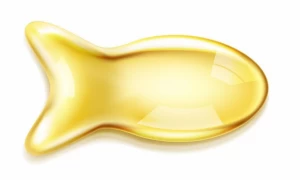
A Different Path to Getting Rid of Excess Fat
- A Different Path to Getting Rid of Excess Fat
- The Law of Thermodynamics
- Fat-Storing Anabolic Hormones
- Exercise
- Stress Management
- A Holistic Approach
A unique journey in weight loss and shedding excess fat...
Please read until the end!
To get rid of our excess fat, we need to approach weight loss rules differently.
There are mechanisms in the body that function outside of just counting calories, meaning reducing calories and exercising alone (unless we can maintain it forever) won’t be enough to keep us at an ideal weight.
Therefore, a different component needs to be added to the formula:
The Law of Thermodynamics
After a certain point, no matter how much we increase exercise, if our metabolic rate decreases, we reach a point where we can no longer lose weight. If we formulate this:
Calories Burned = Calories Expended Through Exercise + Metabolic Rate
Fat-Storing Anabolic Hormones
The role of insulin is to take blood sugar from the bloodstream and transport it into the cell to be used as fuel. When this hormone is in balance, almost no weight gain occurs. However, when insulin resistance develops, it is unable to deliver the blood sugar into the cells, so it converts it into fat and stores it.
Due to high insulin levels, there will be excessive fat accumulation and no fat-burning process, leading to the development of Metabolic Syndrome. Metabolic Syndrome is a dangerous condition that can lead to various organ damage. High insulin levels and insulin resistance increase hunger, leading to higher calorie intake and further fat accumulation, while also reducing our exercise capacity.
• Fat consumption minimally raises insulin
• Protein consumption moderately raises insulin
• Carbohydrate consumption raises insulin to the maximum level
A diet rich in fat and protein, but low in carbohydrates, prevents high insulin levels, and during prolonged fasting, insulin levels remain low, allowing us to tap into stored fat.

Exercise
Here, our goal with movement should be to activate the brain. Whether during activity or rest, muscle tissue and the liver need twice as much insulin to take in glucose. With exercise and intermittent fasting, this ratio drops to ¼.
We should be careful not to tire ourselves or become breathless while exercising. Walking and cycling are great examples of this. In this way, the brain not only manages stress but also secretes a large amount of growth hormone, accelerating fat burning.
When high-intensity exercises are performed, oxygen decreases, leading to the burning of carbohydrates instead of fat. Moreover, in strenuous sports that leave you breathless, cortisol secretion increases, and cortisol, in turn, heightens stress.
Stress Management
Cortisol is a stress hormone. When stress levels increase, cortisol levels rise, and simultaneously, the amount of sugar used as a quicker fuel also increases. In such cases, fat burning doesn’t occur. If this situation repeats frequently during the day, there will be more sugar in the blood and more insulin secretion. This consistency leads to an increase in insulin resistance and fat storage. Consequently, the craving for snacks also intensifies.
Stress is a response to events, and this can certainly be changed. By activating the parasympathetic system, such situations can be avoided. A good night’s sleep also has a restorative and healing effect.
A Holistic Approach
It is essential to take ownership of the body from a chemical, mechanical, and emotional standpoint. This can be summarized as consuming proper foods, staying away from toxic substances, and maintaining correct posture and movement patterns. When we integrate these principles, we achieve optimal health.
Indeed, the process of getting rid of fat healthily and achieving an overall state of well-being requires following these steps. We are here to assist you in achieving these features.

Dietitian Zübeyde Semiz
Nutritionist and Diet Expert





